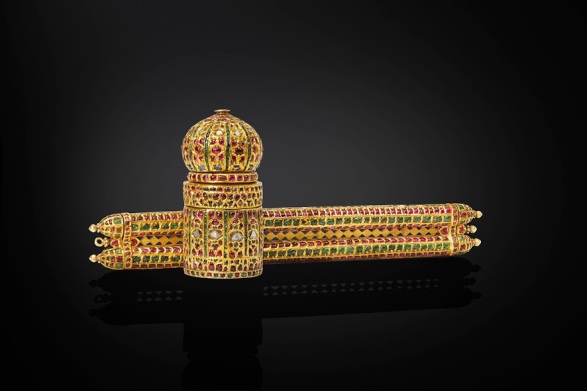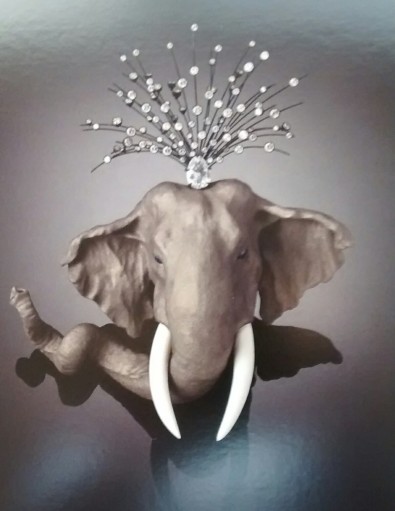
A recent interest in Korean fashion led me to sign up for the Korea Textile Tour, a ten day exploration of traditional Korean culture and textile art. It was my first trip to Asia and needless to say, I was most excited!
Limited to ten women, our group included mostly quilters and a couple of us interested primarily in fashion. We were based in Seoul, South Korea with three leaders:
- Youngmin Lee, a Korean transplant to the Bay Area and Korean textiles artist.
- Mirka Knaster makes her home in Northern California and is a writer and an artist working in fiber arts.
- Lissa Miner is a quilter who hails from Berkeley, CA but currently lives outside of Seoul, South Korea.

Studio of Kyung Yeal Kim, master craftsman. This is where we took the safflower dye workshop.
The days were packed full but we kept to a reasonable pace. Each day we walked an average of five miles, so no need to worry about getting enough exercise. We took docent led museum tours, strolled neighborhoods, met master artists who led us in workshops, including indigo dye and safflower dye. We stayed in Insadong, which is an older part of Seoul known originally as the neighborhood of calligraphy and paper artists. It was a great place to be, located near two subway stations and within walking distance of many galleries and shops. Speaking of subways – I was very impressed with the efficiency (never waited more than 5 minutes for a train), and how clean the stations and trains are kept. Sure it gets crowded and the older folk will push you out of the way but overall the system was a pleasure to ride.
Our hotel was the recently renovated Sunbee. I’m told that it was bought by a retired pharmacist who handed the business over to her son to run. Each of us had her own room, which are remarkably spacious as are the bathrooms. At the end of a busy day, it felt good to come back to a comfortable space. There’s a cafe off the lobby where we met each morning for the included breakfast. Plus free laundry facilities and Wi-Fi.

Public Library.
As for language, it helps to know a little Korean, at least hello and thank you. In general, many young people speak English and most older people do not. Traditional Korean restaurants don’t have menus in English but some do have pictures to point to. I was lucky to have Youngmin’s help – often she checked ahead with restaurants to see what accommodations could be made for my egg allergy. (Several meals are included in the tour.) Modern neighborhoods have English speaking staff in shops and restaurants. I found that communication is possible and actually fun with a few words in common and a willingness to try.
Tourism in South Korea is on the rise, so people are used to non-Korean speakers. But Korea is not yet on the American radar and I spotted very few of my follow citizens.
What is on the radar of young Koreans is western food. Especially coffee, bread, and pastries. We saw many a French bakery and cafe. Also health food, such as organic salad, is very popular in the modern neighborhoods.

Handbag Museum.
Among some of my favorite activities on the tour was the trip to Gwangjang Market. The first permanent market in Korea and the main market for fabric, this place is mecca for high quality rare fabrics such as ramie and silk. It was a treat to see. There’s also a food market on the first floor, offering just about any kind of Korean street food you’d like to eat.
I really enjoyed visiting Ewha Women’s University Museum where we had a docent led tour of the special exhibit – Undergarments from the Joseon Dynasty, 1392-1897 (undergarments worn with Hanbok).
On one of our free days four of us visited the Simone Handbag Museum. A few years ago I had read about this museum, which opened in 2012 and displays antique to modern, handmade to designer handbags. The building itself is in the shape of a handbag.
While exploring on my own one day, I unexpectedly stumbled upon the public library in Bukchon. Another charming historic neighborhood, Bukchon is located near two palaces and is known as a center for traditional arts and artists’ studios.

Really, I enjoyed everything because it was all new to me. Much of the tour is focused on Korean history and culture, which as Mirka pointed out, gives a context to the traditional art we looked at and talked about. I have come home with a desire to learn more about all things Korean.
This was the second year for the Korea Textile Tour and plans are already in the works for 2019. A list of interested travelers is growing. Click here for more information.
There are lots of photos of my trip on Instagram. Follow OverDressedforLife:
#overdressed4life
Check back for more fashionable adventures in Seoul, South Korea.
Read Full Post »






 Confidence. independence, and intelligence are the new and permanent must-haves to be a sexy woman. Carrie Bradshaw displayed these characteristics, behind Carrie was Sarah Jessica Parker (SJP) – a natural example of the woman we are talking about. Behind Carrie and SJP was yours truly, making our combination organic and believable.
Confidence. independence, and intelligence are the new and permanent must-haves to be a sexy woman. Carrie Bradshaw displayed these characteristics, behind Carrie was Sarah Jessica Parker (SJP) – a natural example of the woman we are talking about. Behind Carrie and SJP was yours truly, making our combination organic and believable. 











